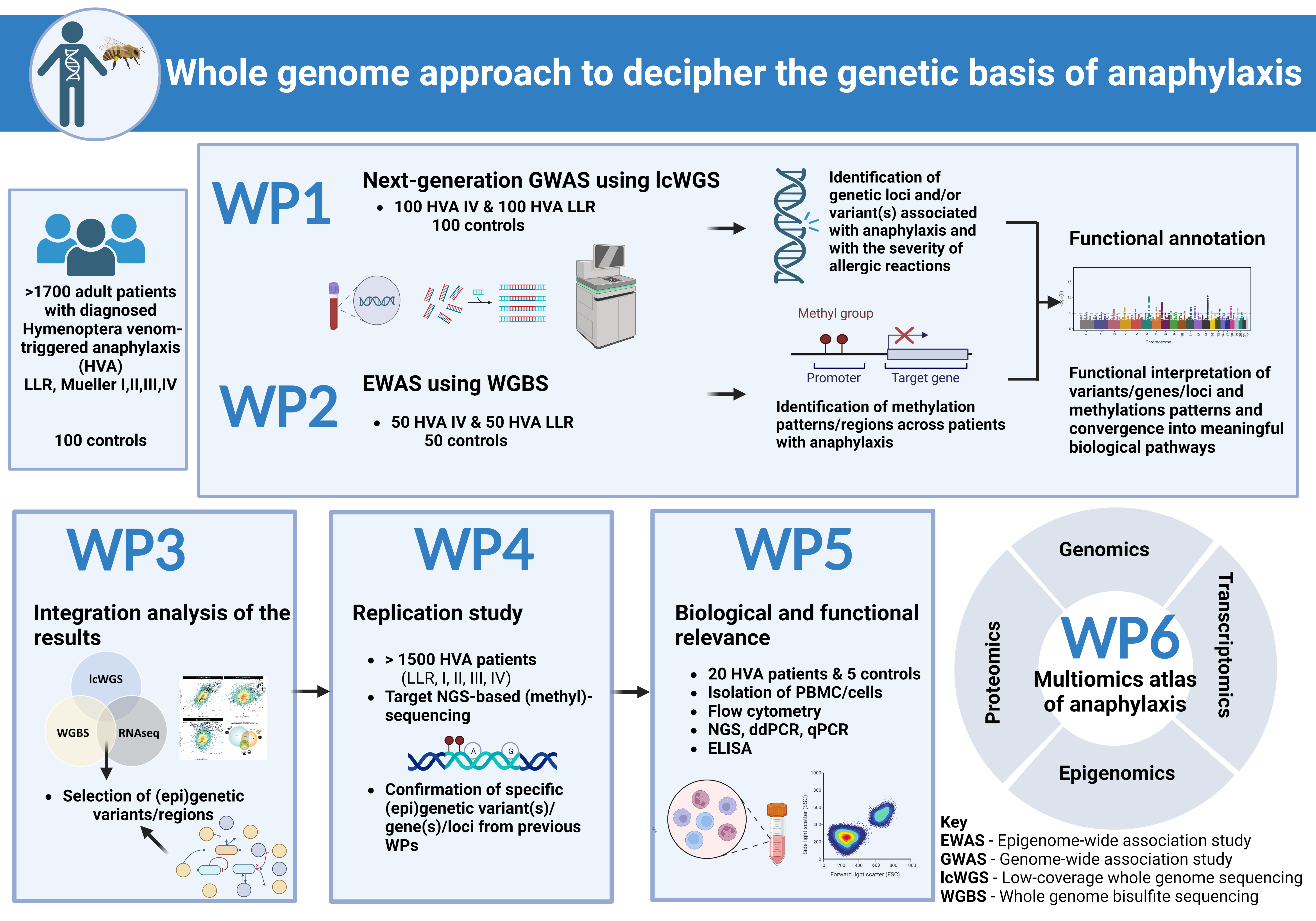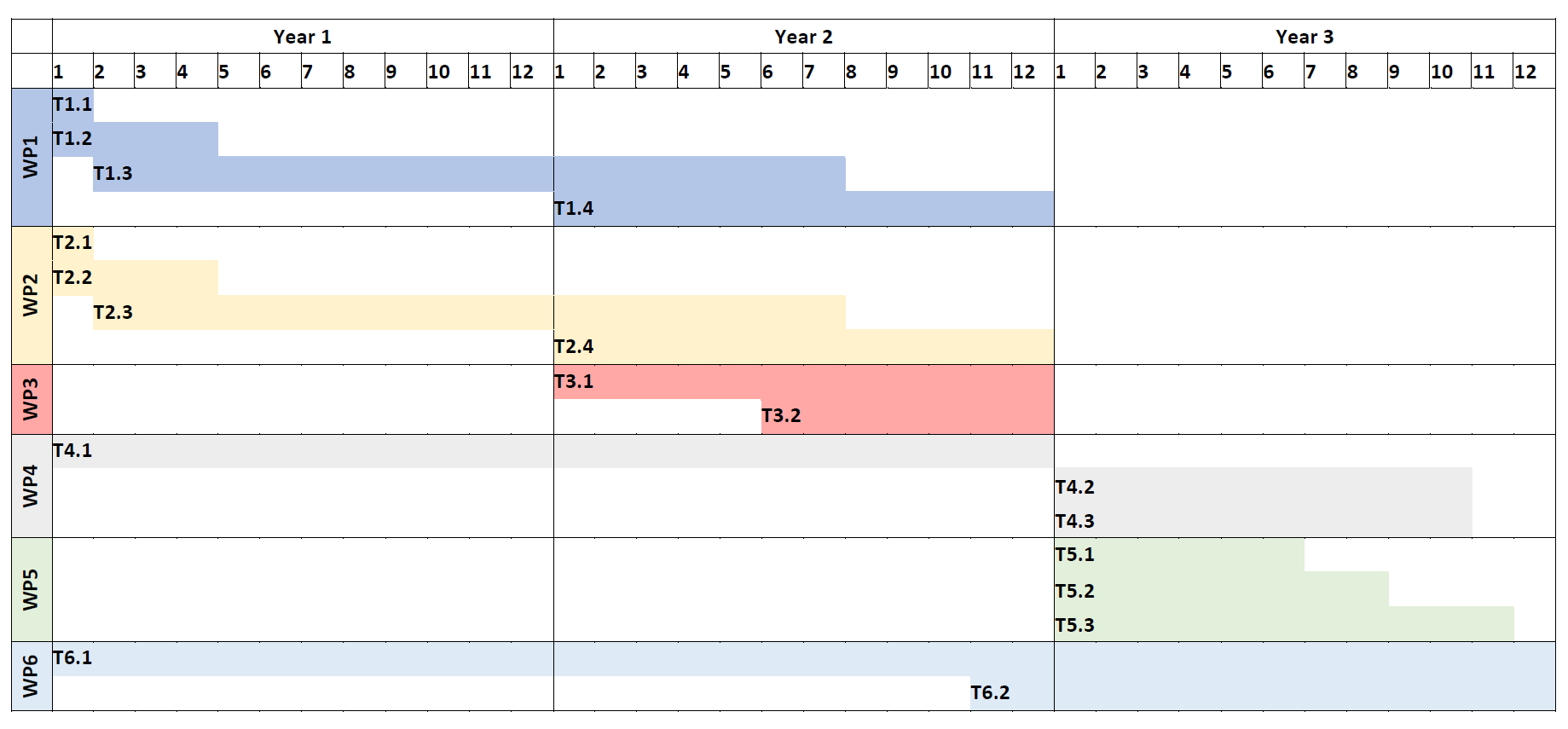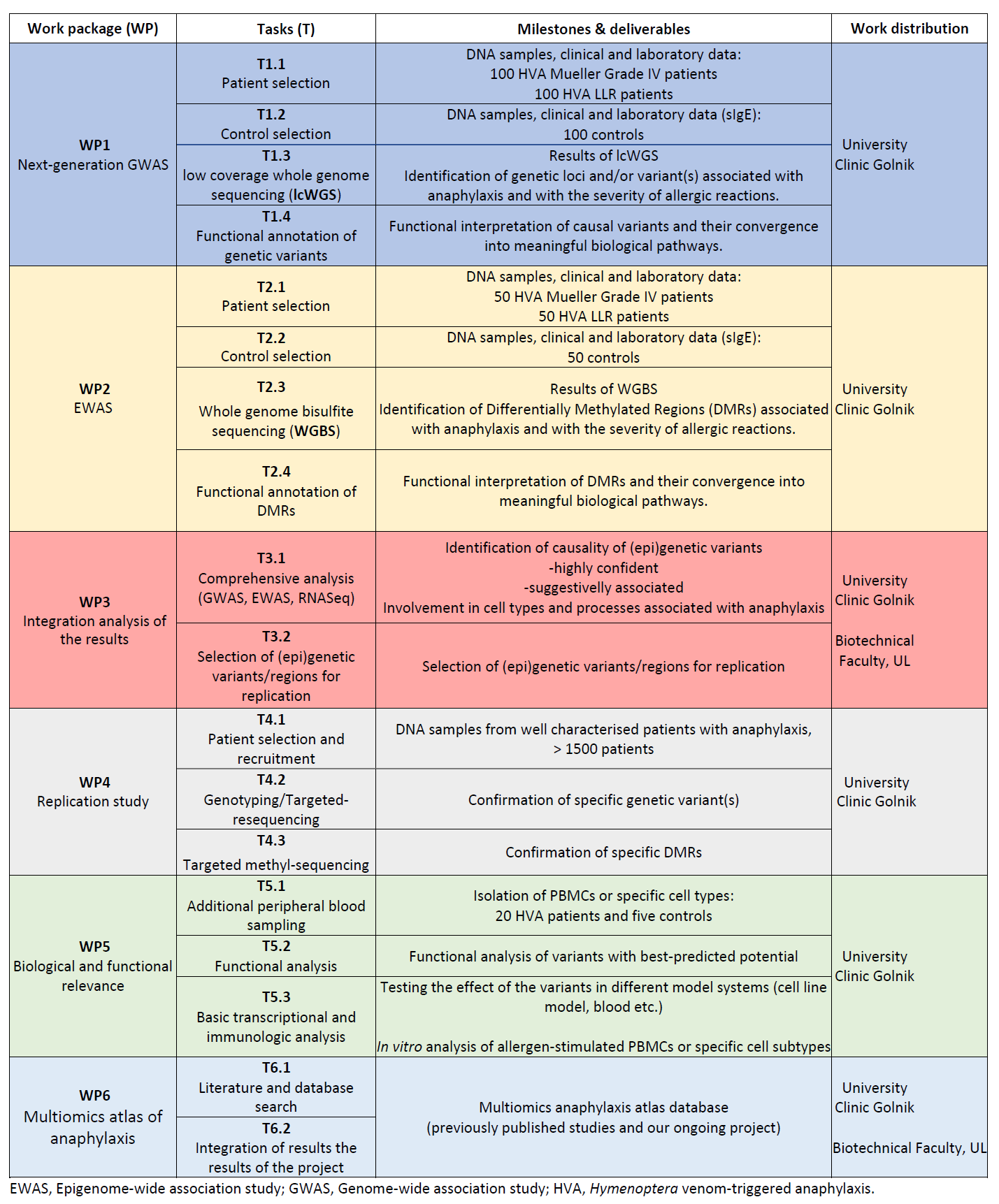Project J3-50114
Whole genome approach to decipher the genetic basis of anaphylaxis
Research project ARIS
Code: J3-50114
Period 1.10.2023 - 30.9.2026
Head: Assist Prof Matija Rijavec, BSc (Microbiol), PhD
ARIS classification: Medicine/Human reproduction
Organisations: University Clinic of Respiratory and Allergic Diseases Golnik; University of Ljubljana, Biotechnical Faculty
Description of the project
Anaphylaxis is an acute, life-threatening, systemic allergic reaction most often caused by food, drugs, or insect (Hymenoptera) stings (venom). The incidence of anaphylaxis continues to increase, with an estimated lifetime prevalence of having at least one anaphylactic episode reaching up to 5%. Even though anaphylaxis is a quite common disease, it is not well understood.
Hymenoptera venom-triggered anaphylaxis (HVA) represents the best “model” for severity studies. When stung, similar amounts of venom are always released into the blood, eliminating the effect of different amounts of allergens on the severity of the allergic reaction. Furthermore, the severity of reactions is repeatable since previous severe reactions to stings are associated with subsequent severe reactions.
Despite the well-established role of IgE antibodies in allergy and anaphylaxis, most people with increased specific IgE (sIgE) against a particular allergen do not react to the allergen at all. This is particularly true for HVA (honey bee and wasp), where the vast majority (∼80%) of people with increased sIgE for Hymenoptera venoms have no history of systemic reactions. On the other hand, some people get only a large local reaction (LLR) after contacting an allergen that causes an anaphylactic reaction in others.
The major goal of genetic predisposition studies is identifying the (epi)genetic risk factors, which could determine the accurate risk for an individual patient to develop a disease, in our case, severe anaphylaxis. Importantly, over the last three years, we have demonstrated that the risk for severe anaphylaxis is associated with inherited differences in α-tryptase–encoding copies at TPSAB1 gene, known as hereditary α-tryptasemia (HαT). Furthermore, besides heritable factors, activating somatic missense variant in the KIT gene, p.D816V (c.2447A>T), also influences the development and severity of anaphylaxis. HαT and/or KIT p.D816V are present only in 30-40% of most severe HVA patients, leaving the reaction severity still largely unpredictable.
This project will allow us to identify the (epi)genetic risk factors for anaphylaxis. Identifying variants in a single or more probably in several genes with additive effects and explaining individual's susceptibility to anaphylaxis will allow us to better understand and manage patients with an increased risk for developing anaphylaxis.
The project will comprise several conceptually similar work packages (WPs). WP1 will be oriented towards the discovery of genetic loci/variant(s) associated with anaphylaxis and reaction severity. Genome-wide association studies (GWAS) using low-coverage whole genome sequencing (lcWGS) will be performed on HVA patients (clinical, laboratory data, DNA already available) with different reaction severities and controls. The association analysis will take into account also the HαT and KIT D816V status (data already available). In the second work package, WP2, we will identify epigenetic characteristics of anaphylaxis using epigenome-wide association study (EWAS). Our study will examine DNA methylation using a bisulfite conversion-based approach on the same individuals as in WP1. The selection of genes from WP1 and WP2 will be functionally and biologically characterized. WP3 will be oriented towards comprehensive and integrative analysis of the results from WP1 (GWAS) and WP2 (EWAS) with transcriptional analysis during anaphylaxis (RNA-seq; data already available). WP4 will be a replication study aimed at confirming the relevance of the most strongly associated variant(s)/gene(s) from WP1, WP2 and WP3 on an independent HVA cohort (recruitment ongoing) using targeted NGS-based (methyl) sequencing. In WP5, the biological and functional relevance of the detected variants and genes will be assessed using different approaches. In the last, WP6, we will use the multi-omics approach to integrate all available genomic, epigenomic, transcriptomic and proteomic data into an anaphylaxis atlas.

Project timeline

Project work packages and their realization



 04 25 69 100
04 25 69 100